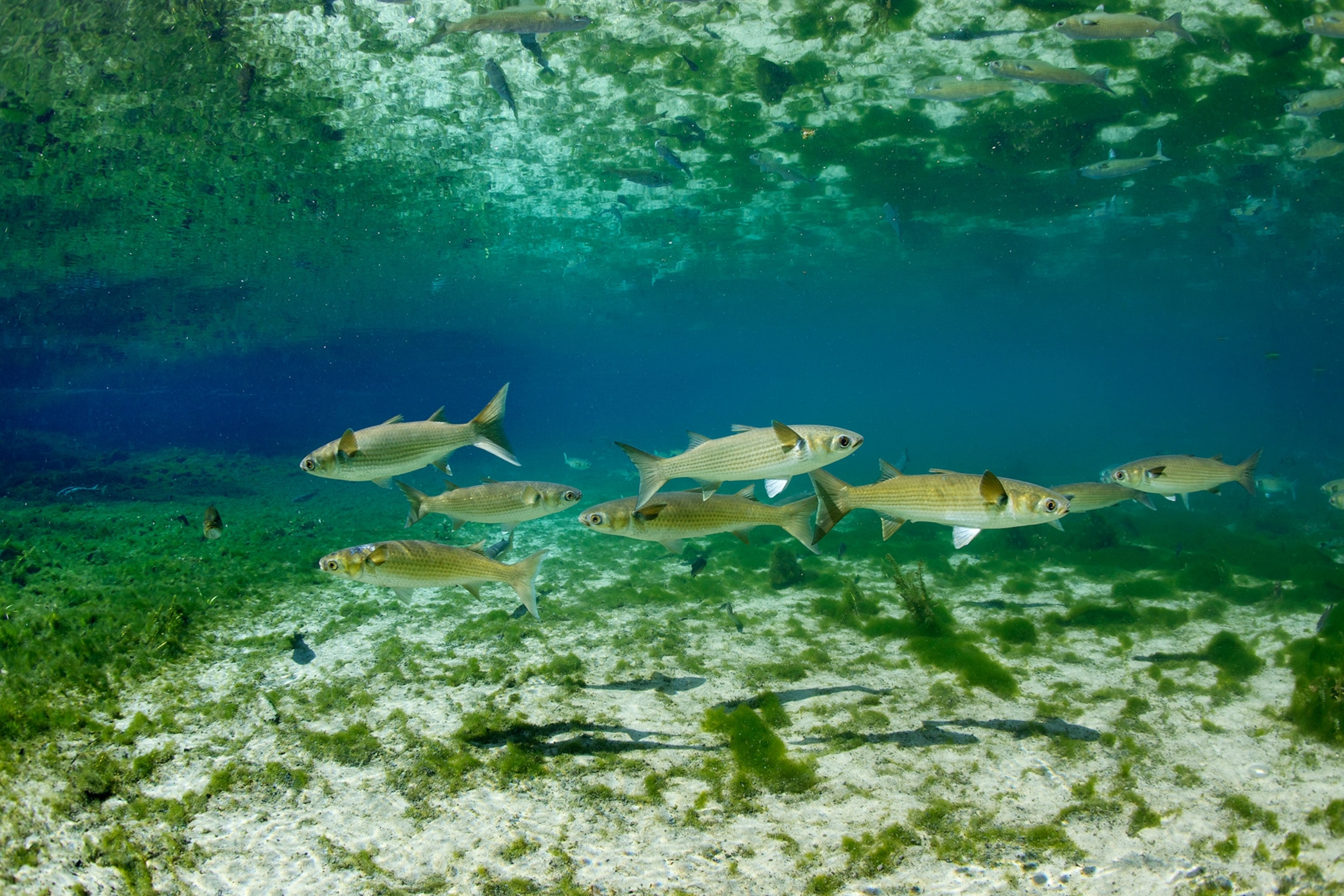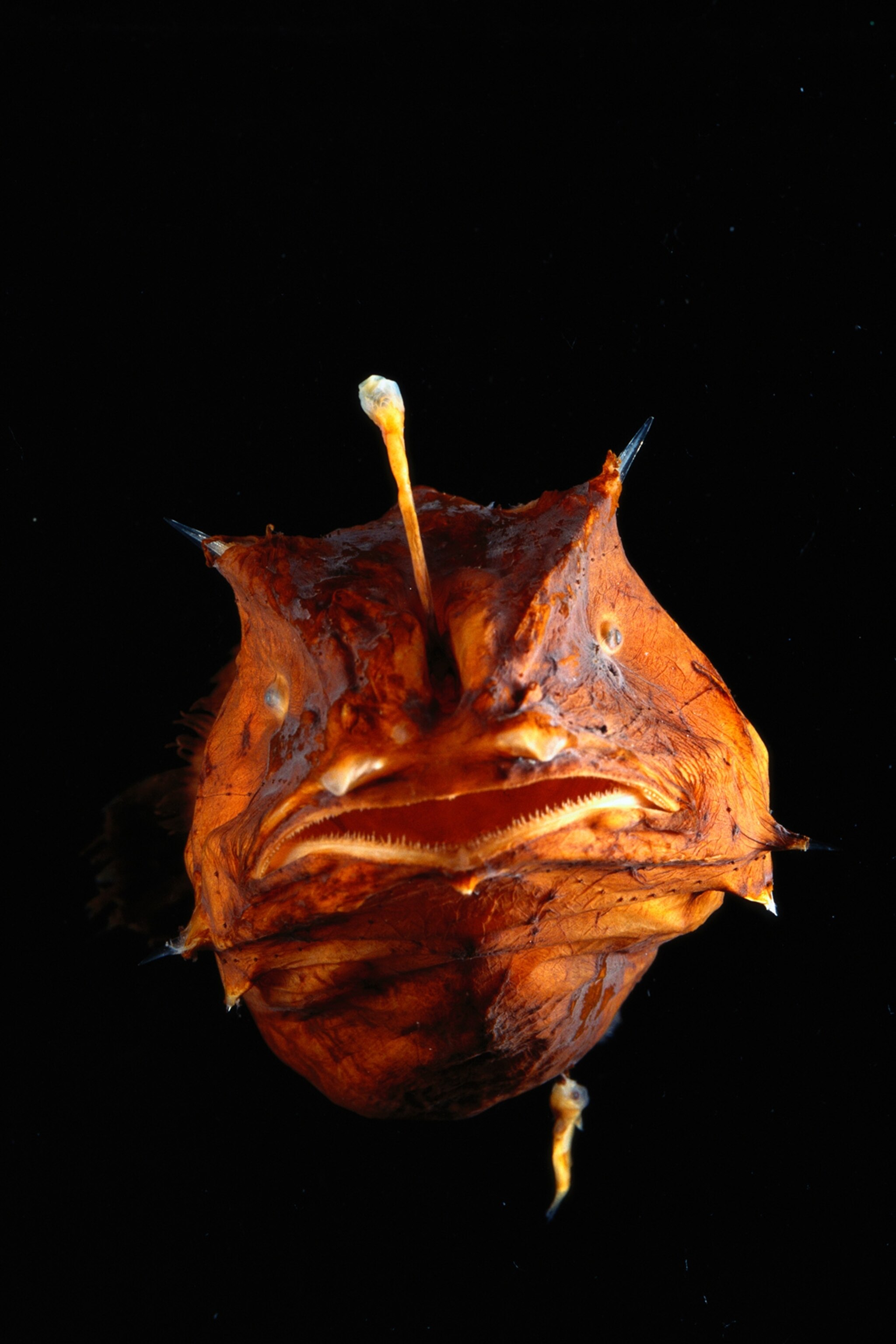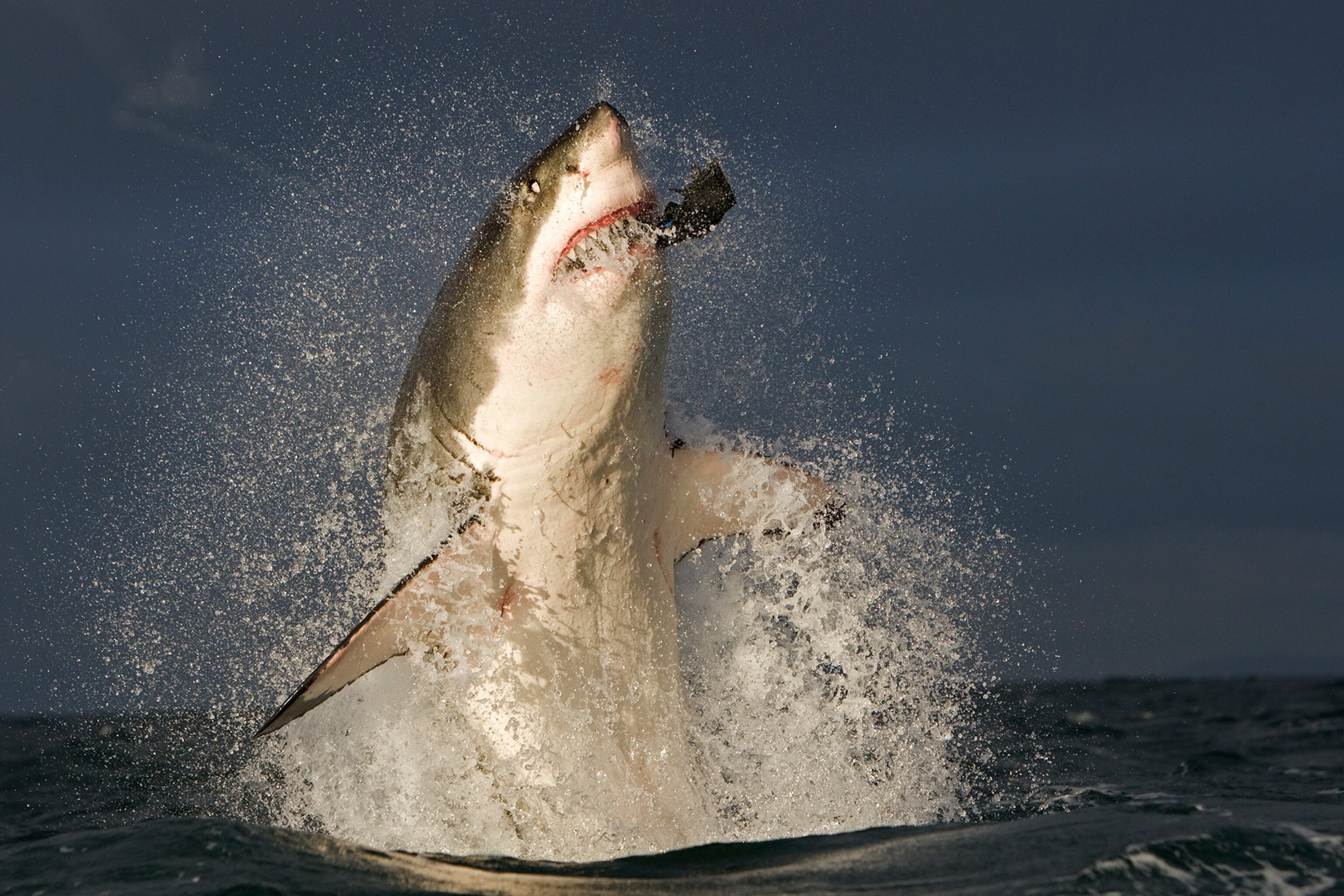
Seas quieted by pandemic could reduce stress, improve health in whales
Scientists have a rare chance to study a marine world largely free of humans and their noisy machines.
The pandemic had quieted the waters of Monterey Bay. Gone were the speedboats, the yachts, and the whale-watching tours. Closed restaurants and shuttered docks kept commercial fishing boats away. Cruise-ship travel was on hiatus.
Earlier this year, with the first coronavirus lockdowns in full swing, whale scientist and National Geographic Explorer Ari Friedlaender spied an opening. He’d returned from studying whales in Antarctica to find few cars on the road, virtually no vessels on the water, and humpbacks arriving in central California from their winter calving grounds in Mexico. One of the Golden State’s most popular coastal recreation spots was suddenly free of the human noises known to hurt sea creatures.
So Friedlaender got permission to boat into the waters of Monterey Bay. While humpbacks fattened up on sardines and anchovies, he quickly took flesh samples from 44 whales. He will use them to study their hormone levels, which rise and fall with the marine mammals’ stress.
From California to Alaska to the swampy bays of south Florida, disruptions caused by the coronavirus pandemic are offering marine scientists a once-in-a-lifetime shot at directly tackling a question many have pondered for decades: Just how much does our noisy life at sea really alter the world for marine creatures?
Cacophony in the seas
It’s no secret that human noise can spell trouble for an array of ocean life. Navy sonar has been shown to cause embolisms in beaked whales as they rapidly ascend to flee the pulses, while the low hum of container ships so thoroughly drowns out whale calls that the cacophony pushes some animals into silence. Dall’s porpoises quickly changed swimming patterns to avoid the racket of passing vessels.
But scientists in recent years have learned that the impact of ocean noise isn’t limited to cetaceans. Auditory stress can affect seals, fish, squid—even simple creatures like oysters. Outboard motors prompt some damselfish to stop fleeing the scent of predators. Loud sounds can give scallops deformities that may reduce survival, drive Arctic cod from their feeding grounds, and send schools of tuna scattering, potentially shifting migratory patterns.
Even half a mile away, the low-frequency boom of seismic air-guns used in ocean mapping and oil and gas exploration can outright kill the tiny zooplankton at the base of the ocean food chain, including larval shrimplike krill.
These discoveries have only become more important as globalization has driven a dramatic rise in shipping traffic over the past half-century. In fact, so much has been learned about the impact of noise on sea life in the last two decades that the National Oceanic and Atmospheric Administration in 2016 adopted a 10-year plan to map and study the growth in the ocean’s cacophony.
“Almost all life underwater relies on sound,” says Michelle Fournet, an acoustic ecologist at Cornell University who also directs a non-profit group of wildlife noise experts, the Sound Science Research Collective. “We certainly know that a lot of very vital functions are compromised when it gets too noisy.”
And unlike light, sound moves efficiently through water. Hydrophones in Monterey Bay can detect rain spattering on the ocean’s surface thousands of feet deep. In water, the bang from a tiny noisemaker called a “seal bomb,” which commercial purse seiners toss to drive away seals and sea lions raiding their nets of squid and anchovies, can travel astonishingly far.
“If you’re standing on the deck of your ship, all you hear is a muffled little bit of nothing,” says John Ryan, a biological oceanographer at the Monterey Bay Aquarium Research Institute. Below the surface, however, the sound of those underwater firecrackers detonating can wrap around the continental shelf and plunge deep into Monterey Submarine Canyon.
Yet understanding how all this sound may harm individual species is complex. Speed boats and outboard motors create piercing high-pitched sounds, while large commercial vessels, like tankers and massive cargo ships, create a low-pitched din, like the throbbing background noise of a city. Sounds that may be harmful to one species may be completely inaudible to another. Blue whales communicate using some sounds below the frequency humans can hear. Dolphins can make sounds high above our hearing range.
To resolve these issues, most ocean noise research has been conducted either in laboratories or marine waters swamped by human sound.
Until now.
A monumental shift to silence
Fournet, for one, studies tropical ecology and works with a team that has placed underwater listening devices in Florida Bay in Everglades National Park. There, she tracks the impact of noise on spotted sea trout, snapping shrimp and gulf toadfish, a squatty little mudfish that sings to its mate, which then comes and lays eggs in the male’s nest.
But this year she’s particularly excited about her work in Southeast Alaska. For a decade, Fournet has studied the impact of large vessel noise on humpback whale communication in that region. This year, though, because of coronavirus risk, cruise-ship visits and whale-watching in Juneau were canceled. The change, she says, “is monumental.”
The last time scientists were able to find a quiet stretch to listen to whales along the Inside Passage was three days in 1976, when the number of then-endangered humpbacks had plummeted to about 250 animals. Now the population have rebounded to between 3,000 and 5,000 individuals. “What that means is that for whales born between 1970 and now, this will be their first quiet summer,” she says. It will be the first time a healthier number of whales has communicated undisturbed as scientists listened in.
Humpbacks are famous for their beautiful songs. Although breeding-age males steal the show, females and babies also communicate using a rich repertoire. Humpbacks moan and groan and growl and produce noises that sound like droplets of water. There are “wup” calls that resemble purring or “swops,” which sound like human laughter. Another call resembles the squeak of a wet squeegee on glass.
So this year, Fournet had Alaska colleagues install a hydrophone in the waters off the whale-watching capital, Juneau, where it’s usually too loud for her to listen to humpbacks at all. The goal is to understand what the conversations are like when humans and their noisy machines are not present.
She suspects that the nature of the acoustic interactions will change. She hypothesizes that the whales, no longer drowned out by boat noise, may actually have more complex communication.
“If you are at a rock concert and trying to have a meaningful conversation, you will talk loudly, slowly, and use simple words,” she says. If you’re chatting over tea on your living room couch, you may attempt to convey more sophisticated thoughts. “You’re afforded much richer language and the ability to convey more information in that exchange.”
Less stress for whales?
In Monterey Bay, Friedlaender is after something a little different. He’s not trying to gauge whether whales are changing their songs or their movements. He’s interested in their general well-being. Does human silence allow them to live a bit healthier—and can scientists measure it?
Scientists have long assumed that noise is increasing whale stress. And they know chronic stress can be just as dangerous for many animals as it is for humans. It has been shown to suppress growth, reproduction, and immune-system function, leading to early death and population declines in species as diverse as ring-tailed lemurs and marine iguanas.
















“Just because you don’t see a behavioral response doesn’t mean there aren’t consequences,” says Friedlaender’s colleague Brandon Southall, a whale scientist who worked for NOAA in Washington, D.C., for years, dealing directly with the Navy on underwater noise impacts on marine life.
But while they regularly sample whale cortisol levels, rarely have scientists had an appropriate “low-noise” control group with which to compare hormone levels. Perhaps the most significant control group to date was created as a result of a tragic coincidence.
During the terrorist attacks on September 11, 2001, two separate groups of scientists happened to be at sea in Canada’s Bay of Fundy—one to take audio recordings of right whale calves and their mothers, the other collecting right whale fecal samples. They stayed at sea even after ship and air traffic ground to a halt.
The researchers were able to show a significant drop in hormone levels in whale feces immediately as the waters went ghostly silent. In subsequent years, as noise levels rose, the scientists learned that the animals’ stress rebounded.
Friedlaender plans to return to Monterey Bay next spring to take more flesh samples as ship traffic presumably returns to normal. And since he also has photographs of many animals’ unique dorsal fin and fluke, he will even attempt to collect samples from the same individuals. As the aquarium research institute already operates a hydrophone in the bay, his team will be able to correlate differences in stress levels with changes in vessel noise.
Friedlaender expects his findings will be similar to what scientists learned after September 11. But his results may prove a bit more complicated because the two traffic shutdowns aren’t identical. In the aftermath of the September 11 attacks, everything stopped—all boat traffic, all air traffic. In the spring of 2020 in Monterey Bay and elsewhere, small boats and tankers stopped, but shipping traffic continued offshore.
“You can’t tell from looking at a whale, but these animals are affected by what we do,” Friedlaender says.
This year, he, Fournet, and other scientists around the world may finally get a better handle on just how much.
You May Also Like
Go Further
Animals
- Soy, skim … spider. Are any of these technically milk?Soy, skim … spider. Are any of these technically milk?
- This pristine piece of the Amazon shows nature’s resilienceThis pristine piece of the Amazon shows nature’s resilience
- Octopuses have a lot of secrets. Can you guess 8 of them?
- Animals
- Feature
Octopuses have a lot of secrets. Can you guess 8 of them? - This biologist and her rescue dog help protect bears in the AndesThis biologist and her rescue dog help protect bears in the Andes
Environment
- This pristine piece of the Amazon shows nature’s resilienceThis pristine piece of the Amazon shows nature’s resilience
- Listen to 30 years of climate change transformed into haunting musicListen to 30 years of climate change transformed into haunting music
- This ancient society tried to stop El Niño—with child sacrificeThis ancient society tried to stop El Niño—with child sacrifice
- U.S. plans to clean its drinking water. What does that mean?U.S. plans to clean its drinking water. What does that mean?
- Food systems: supporting the triangle of food security, Video Story
- Paid Content
Food systems: supporting the triangle of food security
History & Culture
- Heard of Zoroastrianism? The religion still has fervent followersHeard of Zoroastrianism? The religion still has fervent followers
- Strange clues in a Maya temple reveal a fiery political dramaStrange clues in a Maya temple reveal a fiery political drama
- How technology is revealing secrets in these ancient scrollsHow technology is revealing secrets in these ancient scrolls
- Pilgrimages aren’t just spiritual anymore. They’re a workout.Pilgrimages aren’t just spiritual anymore. They’re a workout.
- This ancient society tried to stop El Niño—with child sacrificeThis ancient society tried to stop El Niño—with child sacrifice
Science
- Soy, skim … spider. Are any of these technically milk?Soy, skim … spider. Are any of these technically milk?
- Can aspirin help protect against colorectal cancers?Can aspirin help protect against colorectal cancers?
- The unexpected health benefits of Ozempic and MounjaroThe unexpected health benefits of Ozempic and Mounjaro
- Do you have an inner monologue? Here’s what it reveals about you.Do you have an inner monologue? Here’s what it reveals about you.
- Jupiter’s volcanic moon Io has been erupting for billions of yearsJupiter’s volcanic moon Io has been erupting for billions of years
Travel
- On the path of Latin America's greatest wildlife migrationOn the path of Latin America's greatest wildlife migration
- Everything you need to know about Everglades National ParkEverything you need to know about Everglades National Park
- Spend a night at the museum at these 7 spots around the worldSpend a night at the museum at these 7 spots around the world
- How nanobreweries are shaking up Portland's beer sceneHow nanobreweries are shaking up Portland's beer scene







